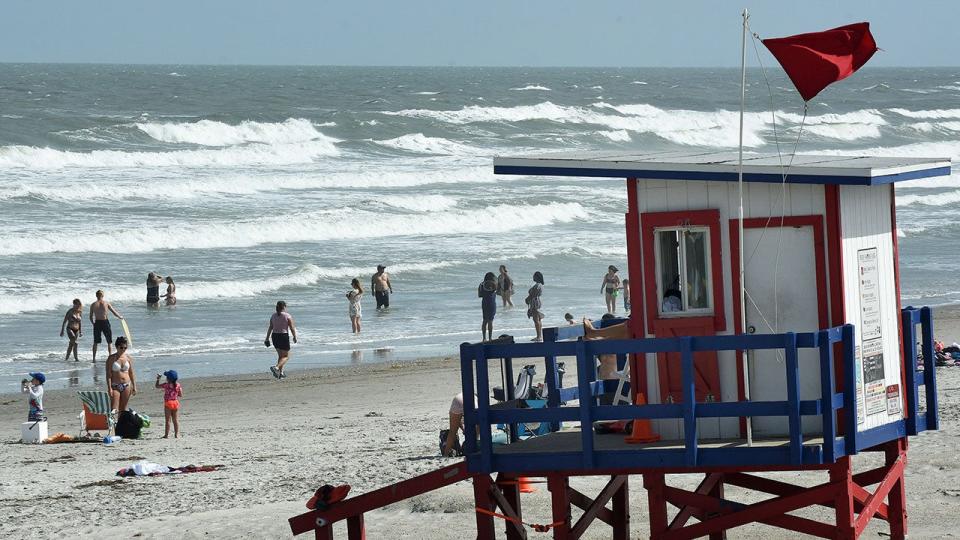What do the different flags at the beach mean?
Summer often means trips to the beach to frolic in the waves, but there may be risks you should be aware of before jumping into the water.
Many public beaches use a system of color-coded flags to notify swimmers of conditions, such as dangerous rip currents, and to communicate other hazards lurking underwater.

Oftentimes, there is a sign near where the flag is raised that will explain the meaning. Some flags can be used with other flags to signal multiple concerns.
Here’s a closer look at the main flags that are used in the U.S.
Some beaches may opt to use even more flags to show safe areas to swim or use certain types of beach equipment. Here are some other flags you might see and their meanings.
Red over yellow – It is recommended that you swim in an area with lifeguard supervision.
Black and white – Designates an area of the beach where watercraft are used.
Yellow flag with black circle – Watercraft use is prohibited.
Orange windsock – Shows the direction of the wind and is used when offshore winds are present. Inflatables should not be used.
Red and white – Emergency evacuation.
For more information about beach warning flags, visit the U.S. Lifesaving Association's website.
Original article source: What do the different flags at the beach mean?


